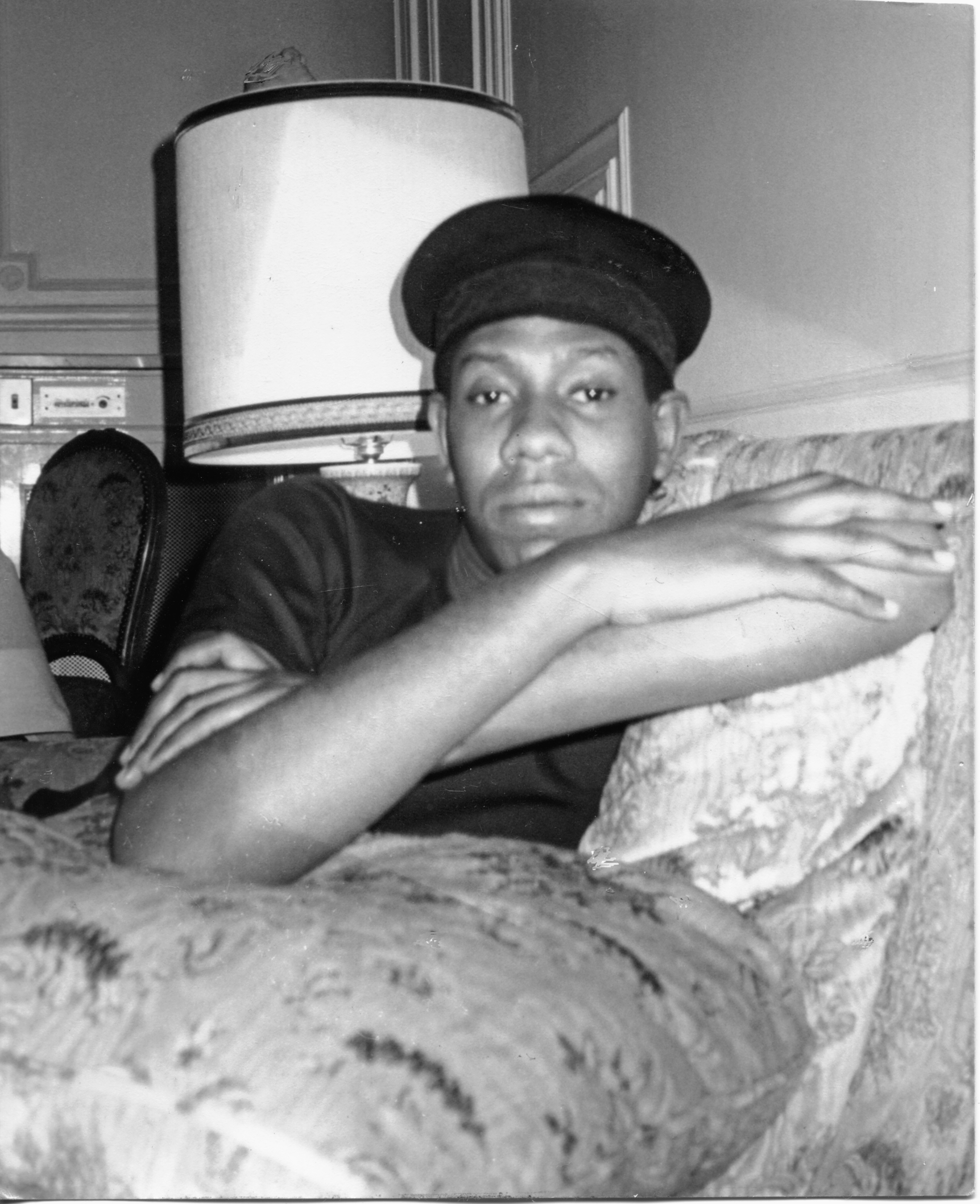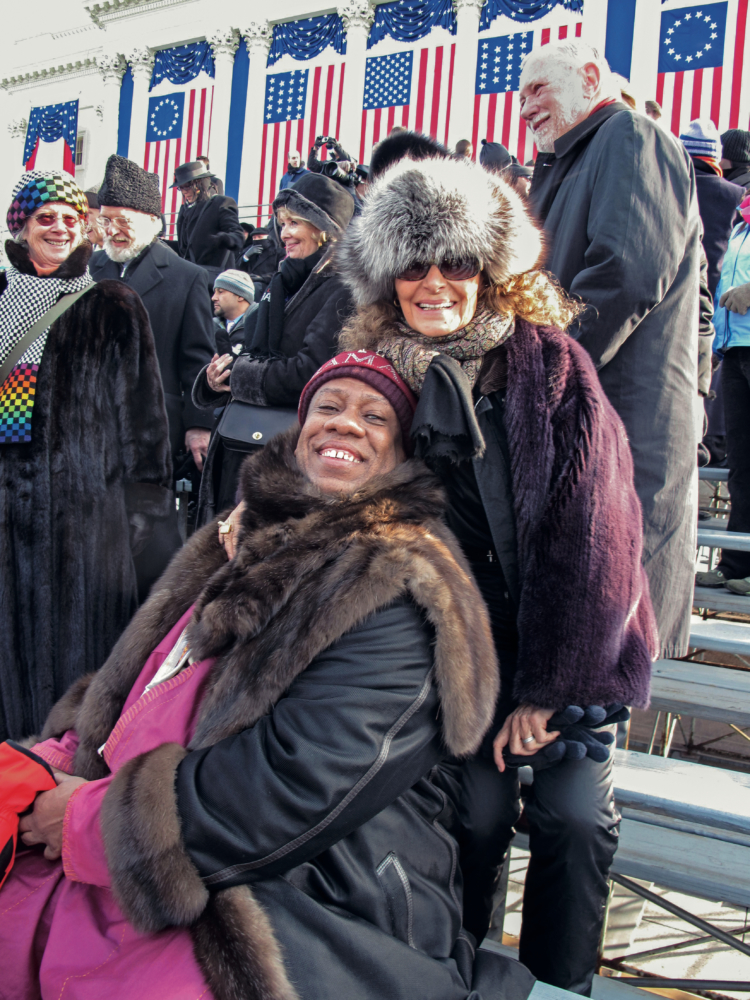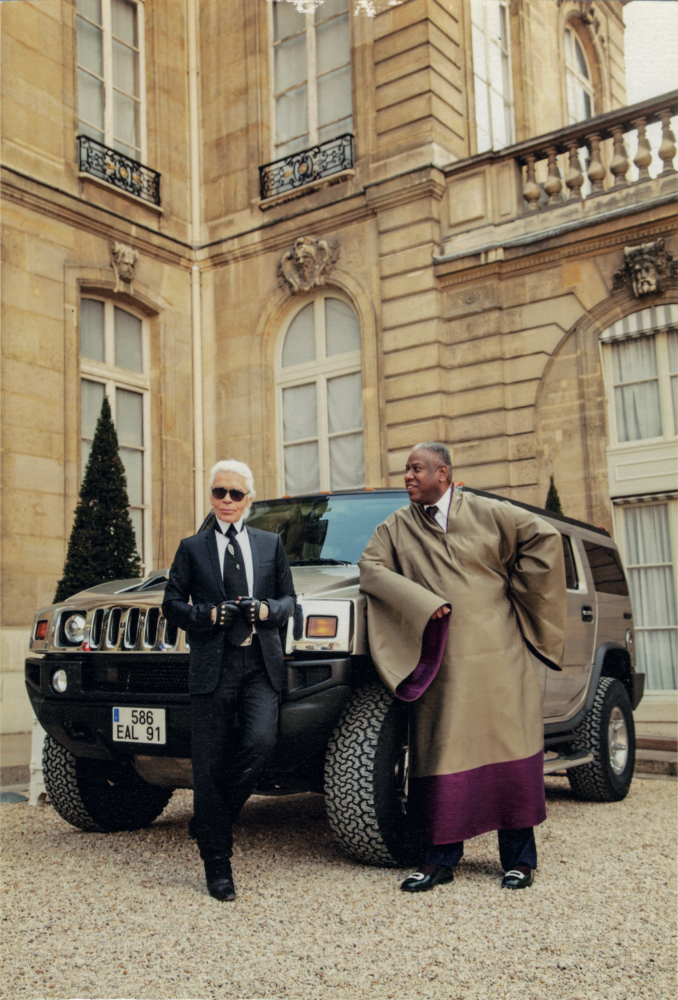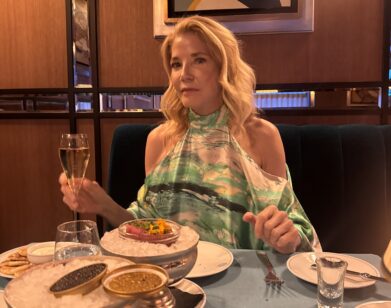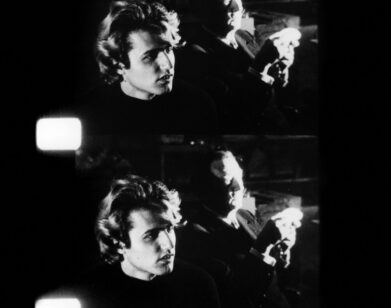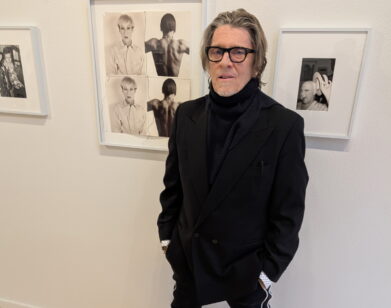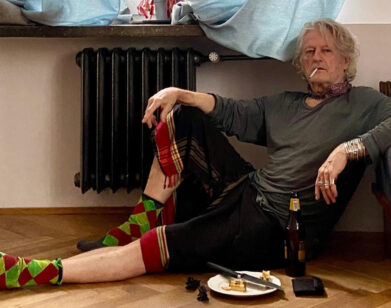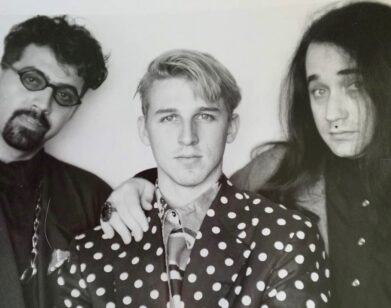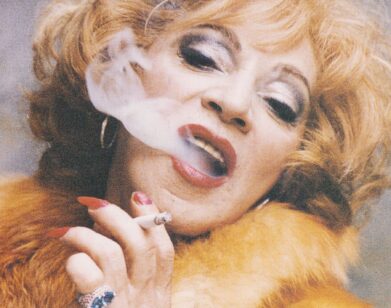André Leon Talley Dishes on Galliano, McQueen, and Lagerfeld, Darling
Fashion is full of one-of-a-kind personalities, but there have been very few figures as original, as self-possessed, as self-made, as unabashedly exuberant, and as eternally in vogue as André Leon Talley. We may be biased. In 1975, early in his magazine career, Talley worked as an assistant at Interview. It’s only fitting that Talley’s new memoir, The Chiffon Trenches (Ballantine), has been stirring up so much fashion-industry controversy for naming names and telling behind-the-camera stories. But the memoir isn’t mere gossip. It tells a pilgrim’s story of a child growing up in Durham, North Carolina under the wing of his beloved grandmother, and finding his passion—or at least a very rich and stylish paradise—in the pages of glossy magazines. Like most miraculous careers, Talley’s climb up the world’s most powerful mastheads was a thing of chance, of charm, of real talent, of bold cosmopolitan intelligence, of being in the right place at the right time, and of knowing where one’s loyalties lay. The Chiffon Trenches is a whirlwind of café-society highs and more highs, with cameos by everyone from John Galliano and Karl Lagerfeld to Diana Vreeland and, of course, Anna Wintour. Talley got on the phone with one of his nearest, dearest, and chicest, Gloria von Thurn und Taxis, to recount the good times they’ve had together, from the palace to the park bench.
———
GLORIA VON THURN UND TAXIS: Darling, I’m so glad to talk to you. You have written such a fabulous book. I can’t get over it.
ANDRÉ LEON TALLEY: Do you love the book?
VON THURN UND TAXIS: I love it. The book is so entertaining. But also so educational for people who don’t know about the great masters of fashion that you talk about. Like your story of Alexander McQueen. I must tell you, I met him only once at [the Italian entrepreneur] Flavio Briatore’s house, when Naomi Campbell came over. The house is in Kenya, it’s on the beach, and it’s a beautiful place. It was New Year’s Eve and there was Alexander McQueen. There was definitely something dark about him.
TALLEY: Oh, very dark, very dark. He was on a suicide mission, and it took him three attempts before he succeeded. He tried three times overnight to kill himself one way, and then he tried to hang himself. He was going online to see how to kill himself. The world of fashion is very sad sometimes. But what I’d like to mention is how you said to me, “Darling, there’s not one tacky line in your book.”
VON THURN UND TAXIS: Darling, that’s exactly the point. The whole book is written by a man who obviously had a great education, and a huge amount of style. It’s a man very happy with himself. You can see that you have roots—solid, solid, solid roots—and that’s thanks to your grandmother and your upbringing. It’s fabulous, because it gives you this laid-back-ness when you arrive in Paris. You studied at Brown, and you have all that education. And then you come to New York, and you have the Metropolitan Museum, and you have —
TALLEY: Diana Vreeland and Andy Warhol.
VON THURN UND TAXIS: And, of course, Vreeland is immediately in love with you. Who would not be? This young, handsome, tall man who is so willing to learn. You sucked up all that knowledge like a sponge. And you’d already had years and years of studying all those fabulous magazines that your grandmother bought for you.
TALLEY: People have forgotten in this world today how to behave properly. People don’t have manners anymore. They’re rude in public, they’re rude in their communications. And I think you and I bonded because we believe in doing things correctly—you might call it a protocol. We love tradition!
VON THURN UND TAXIS: I remember the first time I saw you in Paris during the haute couture shows. You arrived in your fabulous suits. You were always dressed immaculately. And what I love about your book is how you remember the details of clothes. I said to my mother, “If you ask André, ‘What was Ava Gardner wearing in 1962 at the great Met Ball?,’ André will be able to say, ‘She was wearing an Elsa Schiaparelli.’” Darling, you have a memory for material that is unheard of. You are like a walking encyclopedia of fashion.
TALLEY: Yes. And I always gravitated to people who were also walking encyclopedias. One of our great mutual friends was Sir John Richardson. He had such a great knowledge of art and Picasso.
VON THURN UND TAXIS: He also had a great memory for details. And you were very fascinating to him. Every time I called him up to say that I was coming to New York, he asked me, “Can you please make sure we get to see André Leon Talley? I love him so much.” You and he together were such blast. You know what strings to pull to make people laugh, needless to say. I mean, we dance for our money!
TALLEY: We sing for the supper. And we love to eat.
VON THURN UND TAXIS: You fascinated me immediately when I first saw you. As you write in your book, you were the only black man in a totally white society in those days.
TALLEY: One of my favorite early memories of us is when [the American art collector] São Schlumberger moved from the Hôtel de Luzy to her new residence on rue Férou on the Left Bank. She came for a visit to the Schloss and saw your décor and went back to Paris and had the whole apartment done up that way, inspired by your private apartments in the Schloss!
VON THURN UND TAXIS: And didn’t you put on a fashion show in her house for John Galliano?
TALLEY: Yes! At the Hôtel de Luzy.
- Courtesy of DVF Archives.
- © Robert Fairer.
VON THURN UND TAXIS: You describe Galliano as being very poor when you discovered him.
TALLEY: He was sleeping in a bag on the floor. And we saved him. São and I really reestablished his career with the fashion show we threw at her house. I remember we met her for lunch, and John as so nervous. And we said to São, “We have a favor to ask you.” São said, “Why not?” And it was done. And that show was the biggest success of 1994. With that, John got his job at Givenchy, and from Givenchy he went to Dior.
VON THURN UND TAXIS: Are you still in contact with him?
TALLEY: Oh, yes. He’s wonderful. He’s been sober and he’s got his job doing great work at Maison Margiela. He’s back in full form. He’s like the phoenix who rises from the ashes.
VON THURN UND TAXIS: How welcoming of São Schlumberger to let him use her house.
TALLEY: São was so important to Warhol and to Interview. She was one of the first high social queens of Paris to commission three portraits by Andy Warhol. And everyone was so envious because São always entertained Andy, and Fred [Hughes, Warhol’s manager], and [Interview editor] Bob Colacello when they came to Paris. São was incredible. She was extravagant, she was confident, and she could care less. She made her own rules. She was very extravagant about dresses—Lacroix, Chanel, Givenchy. She told me at one point that she bought the most expensive dress at Hubert de Givenchy. It was so expensive she had to go home and show her husband the bill to get it approved. He said, “Why do you need this dress?” And she said, “It’s so beautiful.” And he then bought it. So it’s the kind of world we walk in, and walk through. I remember coming to your house for Christmas one year. You were reading Oscar Wilde fairy tales in English to the young children of your family, your cousins and nieces and nephews. And there was a little German orchestra in lederhosen, and it was just so beautiful, so special. Tradition is everything, and you cannot forget traditions. You cannot forget going to church. Every day you go to church, and that impresses me. It gives you strength. Darling, clothes are not important in this pandemic. What’s important is your strength that comes from your faith, your values. All of that is very ingrained in you, so therefore you can survive.
VON THURN UND TAXIS: Darling, you are so right. Now I wanted to say that when I was reading the book I bent over with laughter about the part where you go to Africa. You describe the chaotic nature of the airport and hotel, but you also grasp the creativity of the place.
TALLEY: Yes, it was Easter. I arrived and thought, “Have I come to Lagos to be killed in a traffic jam leaving the airport?” But the way they dressed in the church. Oh, my goodness, the Africans were dressed so beautifully in traditional dress. It was all based on Handel’s “Hallelujah” chorus. The music was extraordinary. The ministers were extraordinary. I was supposed to go back to Africa this year with Naomi, but then the pandemic came and everything shut down.
VON THURN UND TAXIS: Can I come with you guys next time? I belong there, as you know.
TALLEY: You grew up there.
VON THURN UND TAXIS: In Somalia and in Togo. And I’m telling you, Africa is a magic place. You either love it or hate it. It’s the cradle of mankind, the cradle of mankind.
TALLEY: It’s the cradle of civilization. Darling, do you remember the night we went to Whoopi Goldberg’s house? We were going to L.A. on a private plane, and I said, “No, cancel that trip. We are going to Whoopi Goldberg’s housewarming in New Jersey.” Remember?
VON THURN UND TAXIS: Yes, I loved it so much.
TALLEY: And we met Earth, Wind & Fire? That was a great moment. Those are wonderful memories.
VON THURN UND TAXIS: I love how you describe Karl [Lagerfeld] in the book, the way he functioned and thought and how he made his own world. It was a little bit terrible when we saw him in New York the last time.
TALLEY: The last time we saw him was at the Boom Boom Room. That was very sad to see him there, surrounded by sycophants. He was distant. Behind the sunglasses, he was already in his own universe. He might have been very sick then already.
VON THURN UND TAXIS: Yes, I think so. It’s very sad. But god, we always have a great time together, you and I. Do you remember when we flew to Los Angeles and we ended up playing tennis—
TALLEY: At David Geffen’s house, darling.
VON THURN UND TAXIS: I remember. You were sitting there, and you were telling me, “Can you not be faster? You are so slow. Play faster.” And I was saying, “But listen, I am out of breath.” We always have the best time together. It doesn’t matter where it is. It doesn’t need to be a private plane. We can also sit on a park bench. So, tell us, what finally what motivated you to write this book?
TALLEY: I had this documentary done on me, The Gospel According to André. It came out two years ago, and it was so well-received. People loved it and were so moved by the story that it gave me the confidence to write a book. That is the reason I wrote it. I took a risk to have that documentary crew follow me around for a year and a half. It was quite annoying, but it turned out to be wonderful. And the reception of the people—strangers, young people, old people, black people, white people—it was so marvelous that it gave me the inspiration.
VON THURN UND TAXIS: That’s fantastic, because you are also a bit insecure. You are this very tall man, but you are still a little baby.
TALLEY: Yes, yes, yes, yes.
———

